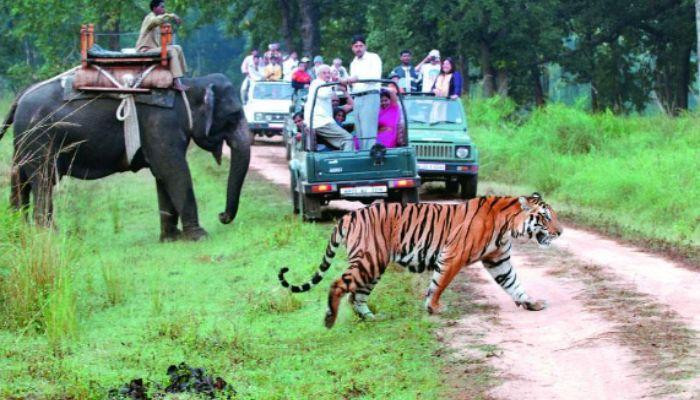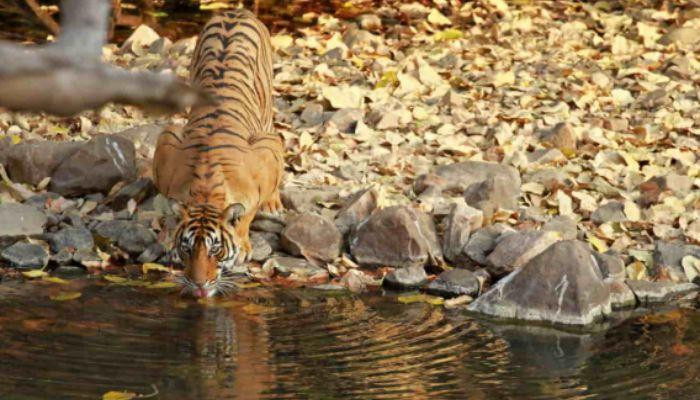Top 5 Wildlife Safari Tours in India
Wildlife tourism in India has grown steadily in the last two decades, but not all safaris are built the same. The idea of sitting in an open jeep, watching the jungle unfold one sound at a time, has its own appeal. Yet for most travellers, it's not only about spotting a tiger. It’s about seeing how animals move through space that isn’t designed for humans.
Some parks are more accessible. Others require more effort. But across India, five locations continue to attract visitors who are curious enough to wait, watch, and travel a little slower than usual.

Corbett, Uttarakhand: Where the Jungle Is Never Quiet
One of India’s oldest wildlife parks, Corbett has been receiving visitors long before safari became a fashionable word. Most people arrive through Ramnagar. The town has enough budget hotels and booking counters to keep things moving. But once you’re inside the reserve — especially in Dhikala or Bijrani zones — the shift is immediate.
There’s more variety here than just tigers. Wild elephants are seen near riverbeds. Deer graze in clearings early in the morning. Birds call from trees that don’t look particularly tall until you stop walking and look up. The terrain shifts quickly — patches of sal forest, open grass, then riverbank. Safari rules are strict. Routes are timed. Most jeeps leave before sunrise, return before noon, and head out again later in the afternoon.
People often book two or three safaris before they even think about seeing a tiger. But Corbett doesn’t rely on just one species to justify your time.
Ranthambore, Rajasthan: Dry Forest, Fast Sightings
In Ranthambore, the paths are flatter. The fort sits high on one side of the forest, watching over lakes and ruins that now belong to animals more than people. The park is close to Sawai Madhopur, which has good train connections. Hotels outside the gate range from luxury tents to government-run lodges.
What draws people here is predictability. Tigers have territories near waterbodies, and drivers know the usual movement. It’s not guaranteed, but this is one of the parks where tiger sightings happen often, especially in Zones 2, 3 and 4. The dry climate and shorter grass make visibility easier.
Beyond the big cats, you’ll see crocodiles basking near the lakes, sambar deer standing still as statues, and peacocks wandering across the road like they own it. The safari routes are well-managed. But like many places that get popular quickly, the silence is often broken by walkie-talkie static and the hurried language of guides.
Kaziranga, Assam: Tall Grass and Slow Roads
Kaziranga is not where people usually go for tigers — though they’re here. The real draw is the one-horned rhinoceros, found in larger numbers here than anywhere else. The park is green and wet. The grass grows taller than jeeps. There are areas that flood regularly, so the land always seems like it’s recovering and growing at the same time.
Safaris begin from different points — Kohora, Bagori, Agaratoli. Each range has its own balance of terrain. Some allow elephant rides in the early mornings. Others offer quiet jeep routes along the outer edge of the park.
Birdwatchers often find Kaziranga rewarding. Wetlands attract storks, pelicans, and many winter migrants. Tourists not used to this kind of jungle — one where grass is dense and animals often hidden — may need time to adjust. But if you’re patient, the place has more to show than it reveals at first.
Bandhavgarh, Madhya Pradesh: Small Area, High Density
Bandhavgarh is one of the smaller parks, but that doesn’t mean it’s limited. In fact, its size is part of the reason tiger sightings here are higher than most other reserves. The terrain is uneven — small hills, forest patches, and meadows where animals gather in the early morning light.
Access is straightforward from Umaria. Many travellers stay in eco-resorts that have been set up around the core zones. The Tala zone is the most famous, but Magadhi and Khitauli have grown in popularity over the years.
Unlike parks where sightings feel like a chase, Bandhavgarh’s experience is slower. Vehicles wait. Drivers talk in low voices. Everyone is alert. Some visitors come with camera gear; others sit quietly, not expecting anything, and still leave surprised. It’s not rare to see a tiger cross the road. But even if that doesn’t happen, the forest itself holds attention.
Periyar, Kerala: Lake Safaris and Green Silence
Periyar is different from the central and northern parks. The land is softer here. Green hills, spice gardens, and a large lake define the landscape. Most people reach Periyar through Thekkady, a small town where the tourism setup is well-structured. The forest department organises both boat rides and nature walks.
The focus here isn’t just on spotting animals. It’s on walking into forest trails with a trained guide, or taking a boat ride at dawn to watch elephants come down to drink. Tigers are rarely seen, but their presence is known. Leopards, wild boar, and giant squirrels are more commonly spotted.
The forest here feels old. The kind of old that doesn’t announce itself. It just waits. The boats are simple. The guides are local. If you're looking for noise, this may not be the place. But if you’re looking to walk a trail without speaking for an hour, Periyar fits.

A Note for First-Time Travellers
Wildlife safaris in India are not controlled experiences. They involve early mornings, cold jeep rides, forest entry permits, and the possibility of seeing nothing at all. And yet, they continue to draw travellers back — because every trip is different.
Some parks are better suited for families. Others are ideal for photographers or solo visitors. What matters more than picking the "top" park is choosing one that fits your pace and patience.
Comments
Post a Comment